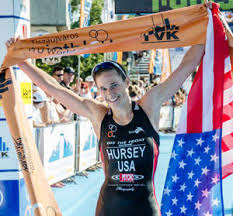It has started.
A machine of inconceivable size and scale is spooling up.
In reality, the machine never slept but it did, for a short period of time, slow its pace. Now the speed is increasing and the wheels are starting to spin a bit faster.
While we're getting ready for holiday parties and off season recovery, committees and federations are begining to plan and strategize in earnest while the hopeful participants train, race and begin to count the months, then the days.
Those in the hunt, have been preparing for years. Some, almost a lifetime. The date, the city and the event have become a unit. A single thing. A goal, a place and a dream.
August 5, 2016
Rio de Janeiro, Brazil
The Summer Olympics!
At Coeur, we’re counting the days too. We know that while 2016 is a long ways off, it will be here before you know it and the race for triathlon points is actually starting. Since we’re living vicariously through our sponsored athlete and rising ITU Star Katie Zafares, we thought it might make sense to share what we’ve learned about the Olympics and the triathlon qualifying process. First, to give credit where it is due, quite a bit of what we learned came from Katie’s husband Tommy Zaferes. Tommy is also shooting for a spot on the U.S. Olympic team and he understands the intricacies of the qualifying process better than anyone we’ve met.

So first, let’s tell you a bit about the mysterious organization behind the games.
International Olympic Committee
It all starts with the International Olympic Committee or the “IOC”. Based in Lausanne, Switzerland, the IOC (which is technically a non-profit) has a mission is to "promote Olympism throughout the world and to lead the Olympic Movement."
It was created by Pierre, Baron de Coubertin, who was French. Which, by the way, is why the announcements during the Olympics are made in the host country’s native language and French. Today its membership consists of 100 active members, 33 honorary members, and 1 honour member. The IOC has the ultimate say over the Olympics and the members have some of the most coveted positions in all of sport.
National Olympic Committees
Below the IOC, there are something like 205 National Olympic Committees or “NOCs”. They are in each country that trains and recruits teams that compete in the Olympics.
The US Olympic Committee is based in Colorado Springs and, we were surprised to learn that it does not receive Federal financial support other than some funds allocated for the military para-Olympians.
National Governing Bodies
Given the number of sports included in the Olympics, it stands to reason that sub groups should exist to oversee each sport. Enter the National Governing Bodies or “NGB”s.
NGB’s are involved in the training, competition and development of their respective sports. They are also (very importantly), responsible for the nomination of athletes to the games themselves.
The NGB that oversees triathlon in the U.S. is USA Triathlon or the USAT.
Federations
International Federations or IF’s organize international rules and tournaments for sports. The IOC provides financial support to 28 IFs for summer sports and 7 IFs for winter sports. The Federation that oversees triathlon for the Olympics is the International Triathlon Union or ITU.
Qualifying for the Olympics in Triathlon
Ok, now that we’ve run through the alphabet soup of organizations, we’ll share a bit about the qualification process itself.
Qualifying for the Olympics is a two-step process. First each country needs to qualify their spots [the top 6 countries get three spots (based on their three highest ITU ranked athletes), 12 countries get 2 spots, and the other 13 spots are allocated based on ITU points/Country (usually smaller countries, and new countries)].
Once each country has qualified their respective spots, then they set criteria for athletes to qualify. It could be based on one race, multiple races, points, or discretion. Each country sets their criteria, so the qualifying process is different for each country, each Olympic cycle.
The process for the U.S. hasn’t been spelled out yet but it is likely that we will have three spots for women and possible that there will be that many for the men as well. Needless to say, the countdown to Rio is going to be exciting!

The mascots for Rio
Now, this were it gets interesting for us at Coeur. You see, from a ranking standpoint, Katie has been at or near the third spot in the United States recently. If the selection by the U.S. team is made based on points standing, there's a good chance we'll have a Coeur sponsored athlete in Rio! But wait. There is a wrinkle. To add to the complexity, the U.S. has the top ranked ITU female athlete in the world on our side. Her name is Gwen Jorgensen and she is a once in a decade type athlete. Similar to Mirinda Carfrae in long course, Gwen is a spectacular runner. If she comes off the bike in the same zip code as the leaders, there's a good chance she can run herself to victory.
So you may be asking yourself, "so what?" We did too at first until someone explained to us that the USAT may build a team around Gwen to make sure she's close enough on the bike to give her a good shot at the win. If that is the case, it is conceivable that a lower ranked athlete, who is incredibly strong on the bike might be selected for the team instead of someone in the top three from a performance perspective.
Needless to say, we at Coeur would be incredibly sad if that transpired but for now, all we can do is wait. it's definitely going to be an exciting ride.
